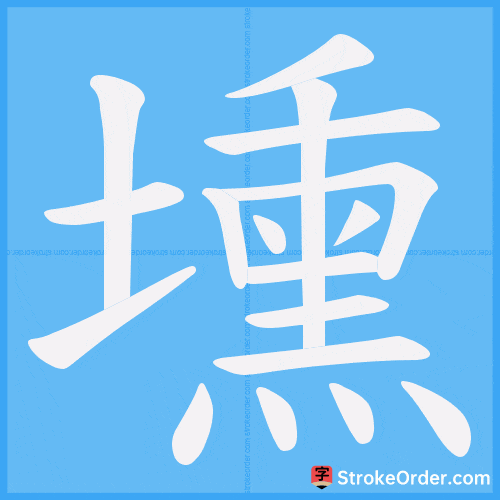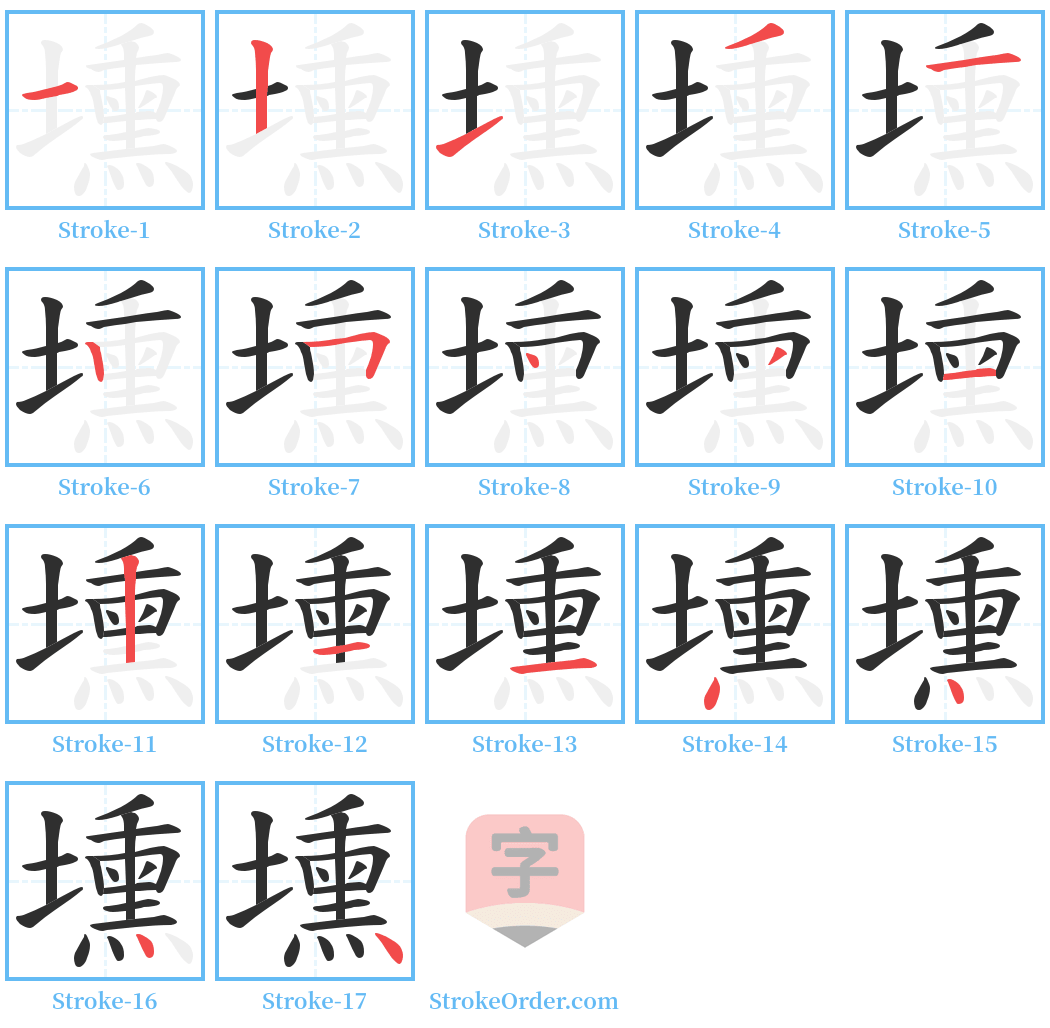壎 Stroke Order
Animated Stroke Order of 壎

Stroke Order Diagrams for 壎

Information of 壎
Pinyin
xūn
Radical
土
Strokes
17 strokes
Usage
★★
Definition
壎
1. Ancient ceramic wind instrument. It has a sharp top and flat bottom, approximately the size of a goose egg or chicken egg. There is a blowing mouth on the top, three, four, or five holes in the front, and two holes in the back, varying from ancient to modern times. Also written as "塤".
(English: An egg-shaped, holed wind instrument. It can also be made from stone, bone, or ivory.)
2. Same as the above definition, as mentioned in "Shuowen Jiezi": "壎 is a musical instrument made of earth, with six holes."
(引) 1. "Shuowen": 壎 is a musical instrument. Made of earth, it has six holes. The character can also be written as 塤.
2. From "Zhouli - Xiaoshi": 壎 xiao tube, noted: "It's as large as a goose egg."
3. From "Liji - Yueling": Adjusting the yu, sheng, 壎, and zhuo.
4. From "Shijing - Xiaoya - Herens": The Bo family plays 壎, the Zhong family plays zhuo.
5. From "Shijing - Daya - Ban": Like 壎 and zhuo, its sound is lower and harmonizes with zhuo.
6. From "Baihutu": The ceremonial music includes 壎 and kan sounds.
7. From "Newly Compiled Three Rites - Throwing Pot - 壎": Always six holes, one above, three in the front, and two in the back.
(例) Such as: 壎箎 (壎 is a ceramic instrument, and 篪 is a bamboo instrument; together they create harmonious sounds, later symbolizing brotherhood and harmony).
3. 盂.
(English: A basin or bowl.)
4. 盂. From "Jiyun - Huan Yun": "壎 is also a basin."
(引自繁体辞典解释) (One more pronunciation variant.)